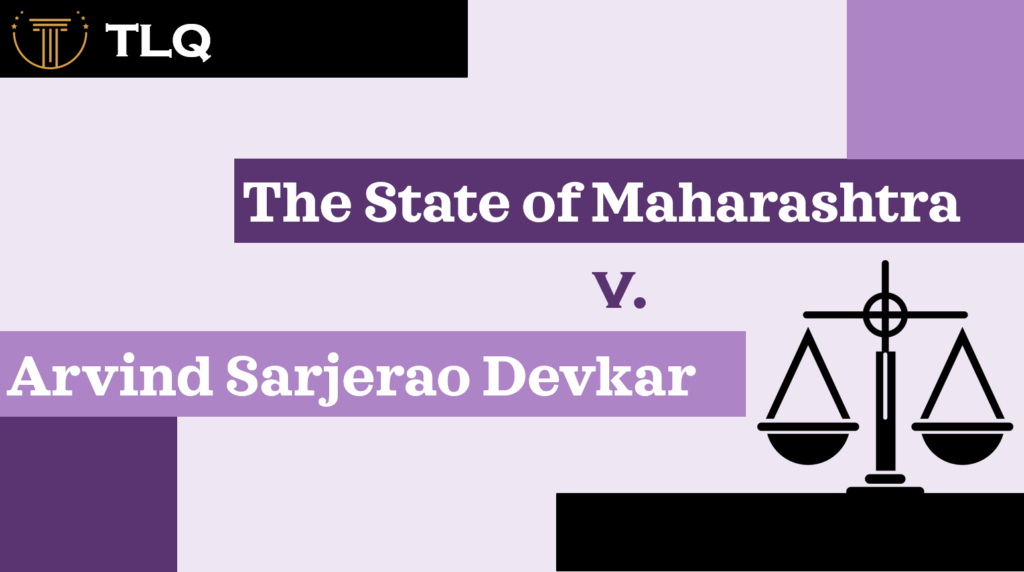Published on: 03rd November 2025
Authored by: Aditi Arora
University of Petroleum and Energy Studies Dehradun
The death penalty is still one of the most crucial subjects of criminal jurisprudence in India. Although its constitutionality has been upheld by the judiciary and its use is permissible in some penal legislations, the moral, legal, and procedural issues of capital punishment are contentious. While it is defended by its supporters to be an irreplaceable instrument of corrective justice and discouragement, particularly in terrorism, rape, or against the collective conscience of society, its opponents challenge its existence with the constitutional fundamental rights like Article 21 in particular, confirming the right to life and personal liberty and the possibility of wrongful convictions, institutional bias, and arbitrary sentencing.
India’s Supreme Court over the years has upheld judicial principles like the “rarest of rare” doctrine to limit the use of the death penalty arbitrarily. However, even with such protection, the use of capital punishment remains non-equal on grounds of socio-economic status, popular opinions, and individual judicial discretion. Empirical research demonstrates that death row prisoners are unequally chosen from socially and economically backword groups, which is a major question mark over availability to good legal counsel and equality before the law.
Furthermore, India’s stance against capital punishment is increasingly isolated in the global community, as more than two-thirds of the world’s countries have eliminated the death penalty in law or practice. Even though India is a signatory to the International Covenant on Civil and Political Rights (ICCPR), India has not ratified the Second Optional Protocol to the ICCPR aiming at the non-compliance of the death penalty. This compels the placing of India’s refusal to abolish capital punishment under close inspection in light of its international human rights commitment as well as constitutional principles.
It is an effort to provide a collective analysis of the legal regime of the Indian death penalty, as far as judicial pronouncements, procedural safeguards, ethical and moral concerns, and international trends are concerned. It also weighs the advantages and disadvantages of its continuation and takes note of the imperative need for reform both legislative and judicial, so that criminal justice administration is brought in line with the norms of justice, dignity, and constitutional morality.
India’s Constitution, being a document that embodies the essential principles of democracy, liberty, and the rule of law, stating the right to life and personal liberty in Article 21. This constitutional right is the cornerstone of the Indian legal system and has been interpreted by the judiciary to the effect of enclosing not merely the right to live but the right to live with dignity. Article 21 in addition has the crucial proviso that no one shall be deprived of this right “except according to procedure established by law.” It is this exception which helps the constitutional cover for upholding the continuance of capital punishment in India.
The constitutional legitimacy of death sentence was first considered by the Supreme Court in Jagmohan Singh v State of Uttar Pradesh, when it was ruled that the death sentence was not unconstitutional, provided that it followed a reasonable, just, and fair procedure. The reasoning of the Court was that since sentencing was a part of a trial by a court of law, and the trial itself was in adherence with due process of law, the death sentence did not violate the rights mentioned under Article 21. Many subsequent decisions reinforced the same position, and thus the legality of the death sentence in the Indian judicial system was established.
How can a democratic state whose ideals are life and liberty simultaneously sanction the deliberate taking of life by state action? This tension between the dignity of life and the power of the state to take life demands a more refinement, multi-faceted analysis. The issue is not purely legal, but philosophical, ethical, and empirical as well. Concerns of wrongful execution, arbitrariness of process, inaccurate effect on vulnerable groups, and global trends towards abolition necessitate a critical re-evaluation of the death penalty’s fixed and vulnerable survival in India. The procedural process of the death penalty in India is primarily grounded in the Indian Penal Code, 1860 (IPC), which provides for a number of offences punishable by death. They include murder under section 302, waging war against the Government of India under section 121, dacoity with murder under section 396, rape with death or permanent vegetative state under section 376A, and kidnapping for ransom under section 364A. Apart from the IPC, there are a number of special enactments that also agree with the imposition of the death penalty for extremely aggravated crimes. In this context, the Narcotic Drugs and Psychotropic Substances Act, 1985 provides for the death penalty for repeat conviction in amounts of narcotic drugs, and the Unlawful Activities (Prevention) Act, 1967 provides for capital punishment for acts of terrorism involving loss of life.
Despite the general statutory presence of the death penalty in Indian criminal law, the courts have always demanded its rarity. The most significant doctrinal template for its imposition was laid down in the landmark case of Bachan Singh v State of Punjab, where a Constitution Bench of the Supreme Court upheld the constitutional validity of the death penalty but simultaneously imposed severe limitations on its imposition. The Court ruled that capital punishment was to be reserved only for the “rarest of rare cases,” where the alternative of life imprisonment was “unquestionably foreclosed.” The judgment set out that sentencing courts had to make an earnest balancing of aggravating and mitigating circumstances in deciding the choice to impose the death sentence. This balancing test, the Court held, had to be made in a principled and non-arbitrary manner, and due weight had to be given to the circumstances of the offender as well as to the offence.
The “rarest of rare” doctrine was explained further in Machhi Singh v State of Punjab, wherein the Court classified cases where imposition of the death penalty would be guaranteed . These are those offenses which are marked by unprecedented brutality, extraordinary depravity, or those which offend the collective conscience of society. The ruling mentioned five categories to act as guidelines to sentencing courts: manner of commission of murder, motive, anti-social or socially reprehensible character of the offence, scale of the offence, and the victim’s personality, example a child, woman, or a person of public standing. With attempting to operationalise Bachan Singh, the Machhi Singh guidelines have also been attacked on the grounds of introducing an element of subjectivity, in this case, in the application of the collective conscience doctrine, which would depend on social, political, and media considerations. Its legal system, therefore, is two-tiered in nature: statutory law envisions capital punishment for a variety of offenses, but judicial interpretation severely limits its imposition, particularly in the effort to balance constitutional protection against public interest as well as discouraging factors. But even standard application of principles of sentencing,specifically the theory-practice gap, has continued to raise problems of arbitrariness , discrimination, and likelihood of miscarriage of justice.
The Indian judiciary has made greater use of restraint and sensitivity in dealing with the imposition of the death penalty. This is seen in some landmark judgments where the Supreme Court not only fixed the area of death penalty jurisprudence but also stressed procedural and unmarked fairness in sentencing. In Santosh Kumar Satishbhushan Bariyar v State of Maharashtra, the Court stressed the need to consider mitigating circumstances in detail, and held that the failure to do so amounts to a violation of the constitutional guarantee against arbitrary punishment. The Court also mentioned that the sentence has to be on the basis of personal consideration and take account of factors such as the socio-economic background of the convict, mental state, and possibility of reformation, thereby linking substantive due process with sentencing discretion. Similarly, in Shatrughan Chauhan v Union of India, a progressive line of thinking was followed where the Supreme Court commuted a number of death sentences on the basis of inordinate delay in the disposal of mercy petitions. The Court held that prolonged mental agony and uncertainty endured by a condemned prisoner amounts to cruel, inhuman, and degrading treatment and hence violates Article 21 of the Constitution. The judgment also established procedural guidelines for processing mercy petitions under Articles 72 and 161, and held that executive clemency is not non-justiciable if fundamental rights are involved. To incorporate the principle of fairness in sentencing as part of the criminal law regime, the Code of Criminal Procedure, 1973 (CrPC) requires several procedural safeguards. Section 235(2) requires the court to conduct a different hearing to allow the accused to present mitigating facts to the court before the court sentences. Section 354(3) also requires the imposition of the death penalty only if the court records “special reasons” in favour of the same, thereby shifting the burden in favour of life imprisonment. Despite such provisions, judicial enforcement has at times been inconsistent. A recent study report prepared by Project 39A at National Law University, Delhi, illustrates system faults in capital sentencing, including non-uniform application of sentencing rules and over representation of socio-economically marginalized sections of society among death convicts. The data illustrates how unequal access to effective legal representation and procedural protection significantly influences the possibility of being sentenced to death, casting doubts over the criminal justice system as applied to the most serious form of punishment.
The international abolition movement for the death penalty has made huge progress over the last several years. Over 140 nations have abolished the death penalty either in law or in practice as of 2023, reflecting an international pattern towards the view that capital punishment dislocates the right to life and is cruel and inhuman treatment. India retains the death penalty on the statute but has not executed a significant number of convicts over recent decades, thus effectively having a de facto moratorium. But this is not formal and is not supported by legislative or judicial policy, and the threat of resumption is ever present in trials in politically or emotively inflammatory cases.
India is a signatory to the International Covenant on Civil and Political Rights (ICCPR) upholding the inherent nature of human dignity and right to life under Article 6. India is not a party to the Second Optional Protocol to the ICCPR with the clear objective of abolishing the death penalty. This selective ratification has been condemned by international human rights bodies, e.g., the United Nations Human Rights Committee, which has repeatedly urged India to move towards complete abolition. Of special concern have been arbitrary use of the death penalty, secrecy about mercy petition decision-making, and discriminatory effect on backward sections of society.
India’s approach is also in conflict with its constitutional values and its aspiration to be accepted as a world democratic leader that is human rights-oriented. The conflict between India’s foreign and domestic policies is in violation of the requirement for harmonization of its legal framework with growing international human rights norms. With the strong constitutional protection of life and dignity, India is well-placed to take the moral high ground against capital punishment, and thereby join the world abolitionist movement.
The Indian judiciary has, at various times, recognized the subjectivities and inconsistencies that are intrinsic to capital sentencing. In Anokhi Lal v State of Madhya Pradesh, the Supreme Court requested on the absence of systematic guidelines in the matter of sentencing, pointing to the reality that equally situated convicts are often given varying punishments, contrary to the principle of equality before law. The judgment once again mentioned the need for a systematic and consistent sentencing policy, particularly in matters where the spectre of death looms in the air. To give importance to these systemic issues, legislative and judicial reforms need to be made. Firstly, serious viewing of the abolition of the death penalty for all crimes except for terrorism or national security offenses, as suggested in the 262nd Report of the Law Commission of India. Secondly, a regime of sentencing like the sentencing guidelines regimes implemented in the United Kingdom and the United States must be implemented with a view to promoting uniformity, transparency, and predictability of sentencing.
In addition, the legal aid system itself needs to be substantially improved, especially for poor defendants charged with capital offenses. Research has consistently indicated that denial of access to effective legal counsel is a causal factor in the imposition of the death penalty.In addition, the sentencing should be guided by pre-sentencing psychological and social assessments, which examine the background of the convict, mental status, rehabilitative potential, and socio-economic vulnerabilities.
The reform process needs to include efforts to improve public discourse on restorative justice, from retribution to rehabilitation and reintegration. Judges, public prosecutors, and the police need to be made sensitive to constitutional protection, procedural rights, and dignity. Lastly, successful reform needs to be based not only on legal obligation but on a long-term commitment to justice, fairness, and humanity. The Indian discourse on the death penalty is an expression of a prolonged tension between the ideals of justice and the constitutional ideal of a humane, fair, and just society. While the Indian judiciary has become reluctant in the application of capital punishment through doctrines such as the “rarest of rare” principle and procedural safeguards under the Code of Criminal Procedure there are still serious doubts. These are procedural unevenness in the application of the death penalty, systemic socio-economic biases, and the risk of irreversible miscarriages of justice. The moral legitimacy of a legal system is best challenged when the most serious of punishments is unequally applied to those deprived of effective access to legal representation or afflicted by social division.
In a rule of law state committed to the protection of fundamental rights, in compliance of the death penalty more and more appears to be an timekeeping. Global trends indicate a clear direction away from the death penalty, with the majority of nations eliminating the death penalty in law or practice. Moreover, empirical data from India which is projected by Project 39A and the Law Commission irrefutably demonstrates that the death penalty is not a quantifiable deterrent to serious crime and therefore eliminates the best argument for its continuation.
In view of these facts, there is a strong constitutional, moral, and practical argument for India to rethink its stance on capital punishment. A morally good legal system needs to give more importance to fairness, proportionality, and the chance of redemption. Justice should not attempt to retaliate, but to reform to ennoble and not wipe out. The irreversibility of executions makes the death penalty a terminally flawed and dangerous tool of state power. Finally, the mark of a civilised society is not the severity of its punishments, but the kindness of its justice. India needs now to bring its criminal jurisprudence in line with its constitutional values and international human rights obligations. Ending capital punishment would not be a display of weakness, but a declaration of moral adulthood and devotion to principle of a assurance that the dignity of life is at the core of the Indian Republic.
CITATIONS
- Jagmohan Singh v State of Uttar Pradesh (1973) 1 SCC 20.
- Indian Penal Code 1860, ss 121, 302, 364A, 376A, 396.
- Narcotic Drugs and Psychotropic Substances Act 1985, s 31A; Unlawful Activities (Prevention) Act 1967, s 16.
- Bachan Singh v State of Punjab (1980) 2 SCC 684.
- Machhi Singh v State of Punjab (1983) 3 SCC 470.
- Santosh Kumar Satishbhushan Bariyar v State of Maharashtra (2009) 6 SCC 498.
- Shatrughan Chauhan v Union of India (2014) 3 SCC 1.
- Code of Criminal Procedure 1973, ss 235(2), 354(3).
- Project 39A, Death Penalty in India: Annual Statistics Report 2023 (NLU Delhi, 2024).
- Amnesty International, Death Penalty Report 2023: Global Abolition Trends (2024).
- International Covenant on Civil and Political Rights (1966) art 6; Second Optional Protocol to the ICCPR (1989).
- Anokhi Lal v State of Madhya Pradesh (2019) 20 SCC 196.
- Law Commission of India, 262nd Report on the Death Penalty (August 2015).




